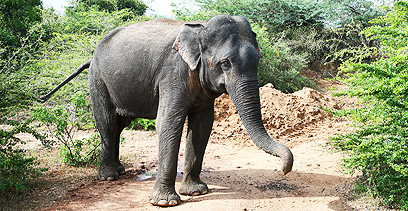Sri Lanka Completes Elephant Census
Sri Lanka has just completed the first nationwide survey of its elephant population, aimed at better protecting the animals and their habitat.
Thousands of volunteers counted the elephants from watchtowers at 1,500 watering holes and ancient irrigation lakes. Elephants are classified age and sex, and more knowledge is sought on their movements and distribution.
This is the driest time of year in Sri Lanka, and animals are at their most thirsty, so come to drink in more open habitats in large numbers, sometimes bringing them into conflict with the people. The conflict between farmers and free-ranging wild elephants results in dozens of human and elephant deaths each year and finding solutions is necessary to.
Sri Lanka revere elephants as sacred. Since ancient times, captive elephants have fulfilled ceremonial roles for priests and kings. Frustratingly for the Sri Lankan authorities, this involvement of elephants in pageants persuaded some conservationists to refuse to lend support to the census for fear that they might be supporting attempts to capture elephants and remove them from the wild.
A government wildlife official has tried to allay concern from conservationists that the census will be used to bring more animals into captivity. A senior wildlife official, RB Dissanayake, told the BBC they want to use the survey results to minimise clashes with people and declare new protected areas. The official denied that the census also serve to find strong young elephants to be captured and donated to temples. He said tame elephants would instead be bred from the existing domesticated or captive population.
Earlier this week, environmental groups pulled out of the elephant survey after a minister said it would be used to tame more of the animals. Wildlife Minister S. M. Chandrasena had been quoted in the Colombo-based Daily Mirror that the results of the survey would be used to identify elephants to be domesticated and handed over to the temples. The number of tamed elephants is thought to have declined from about 300 to perhaps half that number.
The fall in the number of elephants in Sri Lanka demands that a census is necessary. One estimate is that numbers have fallen from 12,000 to 4,000 over the past century. It seems clear that more information and action is needed to stem that decline – however passionately the conservationists may argue that their boycott was justifiable.





